Ultra Unreal
June Miskell and Soo-Min Shim
We visited the Museum of Contemporary Art (MCA) on the opening weekend of Ultra Unreal. We were immediately greeted by Pootopia, a live performance by the Tokyo-based artist Saeborg. Dancing to a musical medley by ABBA, performers in inflatable latex dung-beetle costumes scurried around the relatively small entrance foyer of the MCA, throwing inflatable latex mounds of faeces into the claustrophobically gathered audience.
Within eyeshot of the performance were Saeborg’s installations Slaughterhouse (2021-22) and Pootopia (2020-22). In Slaughterhouse, anthropomorphic latex pigs populate an “explicit” farmyard scene which included a pig-tailed laborer holding a sign for “Frozen Sperm”, cartoonish inflatable trees, and a sunny backdrop of blue sky as one pig mounts another in an act of fornication. Pootopia is in the other corner of the room with latex dung-beetles propped up against the gallery’s garishly-painted yellow walls, alongside mounds of faecal matter resembling mountains. Saeborg’s use of latex and rubber is inspired by her involvement in Tokyo’s fetish club event Department-H, known for its rubber festivals. However, while Saeborg’s performances at Department-H are inherently part of Tokyo’s underground fetish subculture, the context of the MCA rendered the uninhibited nature of Saeborg’s performance as spectacle. The bombast of the performance was overwhelming and is indicative of the exhibition’s curation which after multiple much-needed visits, seems to be a competition of spectacle. Is spectacle a condition of speculative exhibition making, needed to make us pay attention to what the future can hold? Or perhaps is spectacle an unfortunate consequence of shallow institutional engagement with speculative world-making?

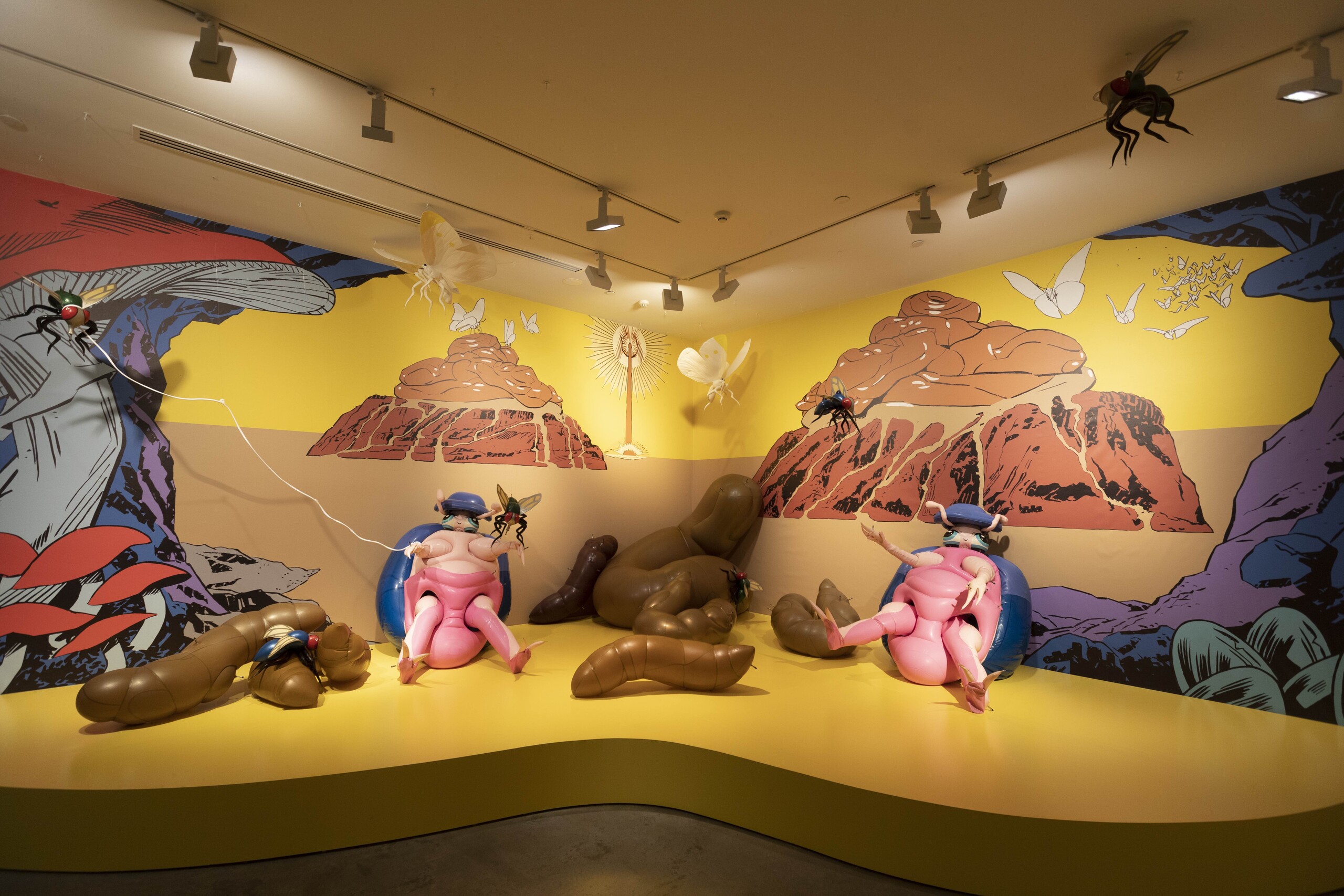
Over the past few years, we have seen numerous artworks and exhibitions emerge which seek to reimagine new worlds and futures. Ultra Unreal, currently on view at the MCA and curated by Anna Davis is the latest exploration of speculative world-making. Previous examples include Blak-Queer Futurism at Artspace in 2018, Feedback Loop at the Australian Centre for Contemporary Art (ACCA) between 2019-20, and The Multiverse at Bundoora Homestead Art Centre between 2020-21. Artists and collectives have, of course, been forging alternative visions of the future for decades. This recent trend of exhibitions in Australia points to a new wave of institutional interest in speculative world-making by queer artists and artists of colour. You could say that attention to urgent socio-political and environmental crises like BLM, COVID-19, and the climate crisis has propelled institutions to reconsider whose realities might be represented and whose futures are valued. We see institutions responding to the pressure to stay relevant and progressive, engaging increasingly with works from marginalised groups. As Verónica Tello has written elsewhere, “identities are moulded into verbs as institutions heed the demands of contemporaneity, differentiating themselves from the normative paradigms of yesteryear.” The risk is that institutions without a history and experience of working with marginalised groups—let alone internal staffing to reflect this—diffuse their emancipatory visions by turning them into spectacles.
This risk plays out in Ultra Unreal’s curatorial framework, which collapses together a number of disparate ideas and practices. The wall text in Ultra Unreal refers to “religion, neuroscience, ecology, artificial intelligence, myth, gaming and club cultures”, as well as “the politics of the dancefloor”, “the vitalities of the underground”, “LGBTQIA+ nightclub communities” and “late-night energy.” Rather than a rigorous investigation of one concept, this grouping creates an extravaganza of alterity. Furthermore, techno-futurist aesthetics and high-tech computational visuals are used as a way to draw audiences in. These aesthetics (which emerge from intellectual and attentive discussions by artists about the limitations and possibilities of digital pasts and futures) are removed from their speculative politics, becoming marketing material simplified for their visual appeal and allure.

The curatorial framework also participates in a more troubling trend, implicitly associating techno-futurism with Asia and Asian identity. All the artists in Ultra Unreal (with the exception of Alex Gvojic working in collaboration with Korakrit Arunanondchat) are Asian. This risks a form of techno-orientalism, the phenomenon of imagining Asia and Asians in hyper-technological terms, where Asia is seen to be technologically superior and therefore threatening. Through this implicit association, Ultra Unreal unintentionally evokes tropes of Asians as robots, clones, slaves to the machine, unoriginal and oppressed—tropes that continue to be popular in the collective consciousness of Western audiences.
This is further demonstrated by the use of Lu Yang’s video installation DOKU (2021) for its promotional material. Comprised of six single-channel digital animations that are installed in a central hexagonal structure, DOKU features Lu’s digitally reincarnated gender-fluid avatar Doku (named after the phrase “Dokusho Dokushi”, meaning “we are born alone and we die alone”) across six different environments and costumes, each representing a realm of life, death and rebirth in the Karmic cycles of Buddhist cosmology. Outside of the Ultra Unreal exhibition, we can see Lu’s work in a number of concurrent exhibitions that focus on post-human life-forms and virtual futures. In Sydney alone, Lu’s works are currently being exhibited in Elemental at the Art Gallery of New South Wales and No False Idols at 4A Centre for Contemporary Asian Art, while in Canberra, Lu’s solo exhibition Screen Bodies is also showing at the Gallery at the Australian Centre on China in the World. Lu’s work is significantly placed across major cultural institutions in Australia right now. Visual stills from Lu’s hyper-digital animations are being used as the main promotional material for the group exhibitions they are included in. We don’t wish to suggest that the current popularity of Lu Yang’s work is not due to the merit of the work itself, but rather to draw attention to the Western predilection for images of a highly “asianised” post-human future. Lu Yang’s video game aesthetics have been rendered representative of such a technological future, creating a rather shallow expectation that the future will be entirely digital.
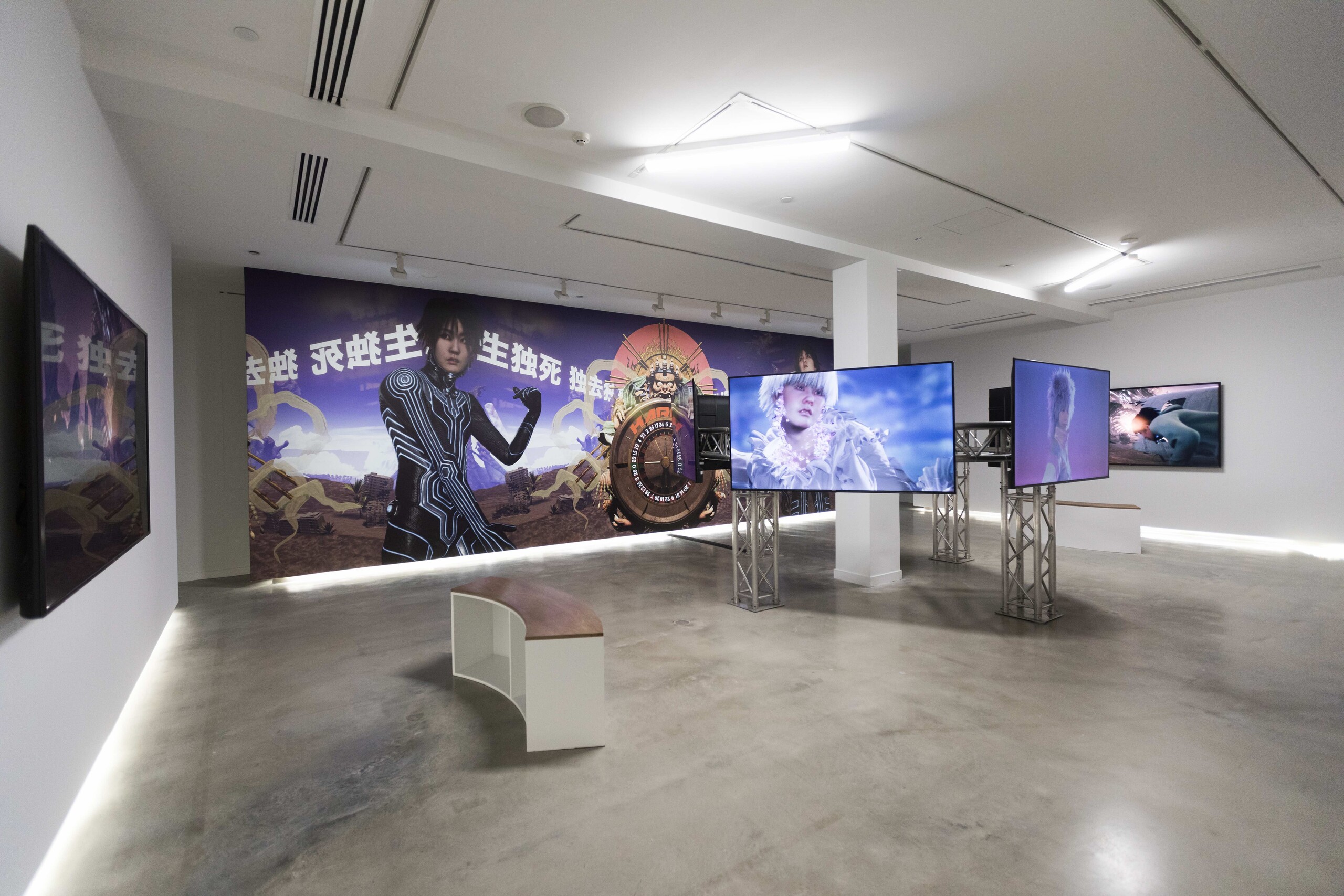
There are certainly less myopic ways to curate artists on the theme of “more-than-human futures”. For example, ACCA’s exhibition “Feedback Loop” similarly explored the ways that mythologies and spirituality take shape in digital media. ACCA’s “Feedback Loop” took a more formalist approach, exploring the ways in which the featured artists work with “media and computational thinking, gaming software and CGI … alongside live performance and material practices of sculpture, textiles, drawing and painting”. By showcasing works that entwine digital images with non-digital objects, “Feedback Loop” posited a more nuanced vision of the future, where the digital interacts meaningfully with the physical. The curatorial framework was expansive, unlike Ultra Unreal which takes a more prescriptive and culturally specific term chaohuan from Chinese sci-fi literature.
The title of the exhibition Ultra Unreal, as Davis writes, invokes science fiction novelist Ning Ken’s notion of chaohuan (which translates to “surpassing the imaginary”). Ning Ken’s essay on LitHub (one of the few English translations of the original text) makes clear that the notion of chaohuan was formulated to be culturally specific to contemporary China. This formulation emerged from a desire to understand how contemporary “Chinese reality has seemed like a hallucination”. For Ning Ken, “(w)hen events occur that exceed our imagination, the world can start to seem unreal”. He recounts events of Chinese officials embezzling thirty-one million US dollars in cash, or cases such as a judicial officer in a provincial supreme court securing four marriage licences for himself to legally wed four different women. Ultra Unreal is not a show on contemporary Chinese politics and everyday life, but will viewers make certain assumptions considering the context of Ning Ken’s term?
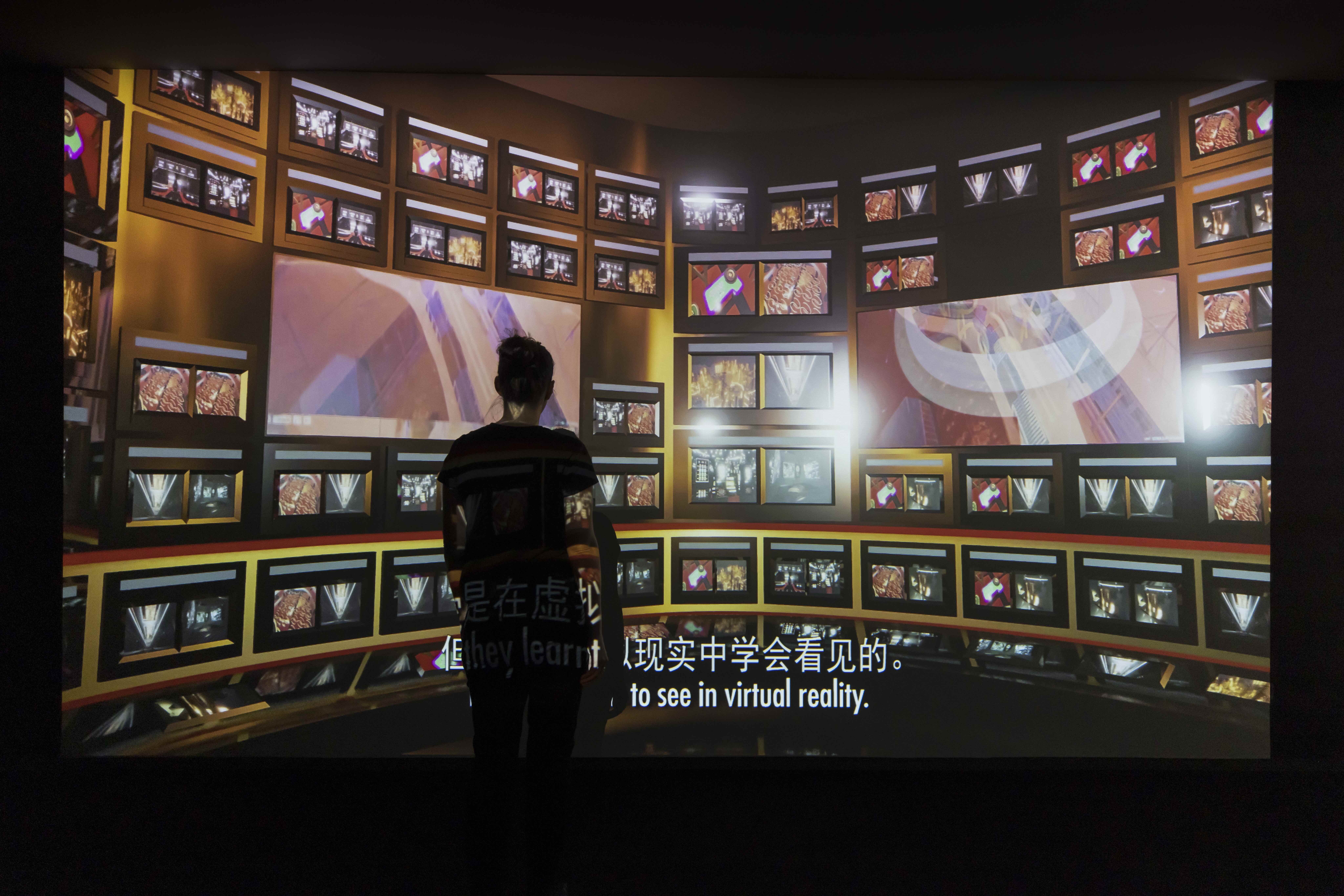
The loose application of chaohuan to all of Asia in Ultra Unreal may flatten the audience’s perceptions of the works, but may also unfairly flatten the artworks themselves. For example, in many ways, Lawrence Lek’s single-channel CGI film Geomancer (2017) cushions Ning Ken’s framework, as the film was developed as part of Lek’s wider research into China and technology. Geomancer, running 48 minutes long, is set in Singapore in the year 2065 through the perspective of an AI that wishes to become an artist. Placed under Ning Ken’s framework, it is easy to see Geomancer as a limited commentary on China’s technology, playing into Western anxieties of a technologically superior and “rising” China. However, as Lek states himself in an interview, “it’s not only about China, or even East Asia; it’s about viewing the global techno-industrial complex as a post-human intelligence whose central purpose is to survive”. Relying on a term designed to critique contemporary China poses further problems for the other artists in the exhibition who have connections to a multiplicity of locales across Asia, where the MCA’s extension of chaohuan to encompass non-Chinese contexts erases the specificity of their histories and commentaries.
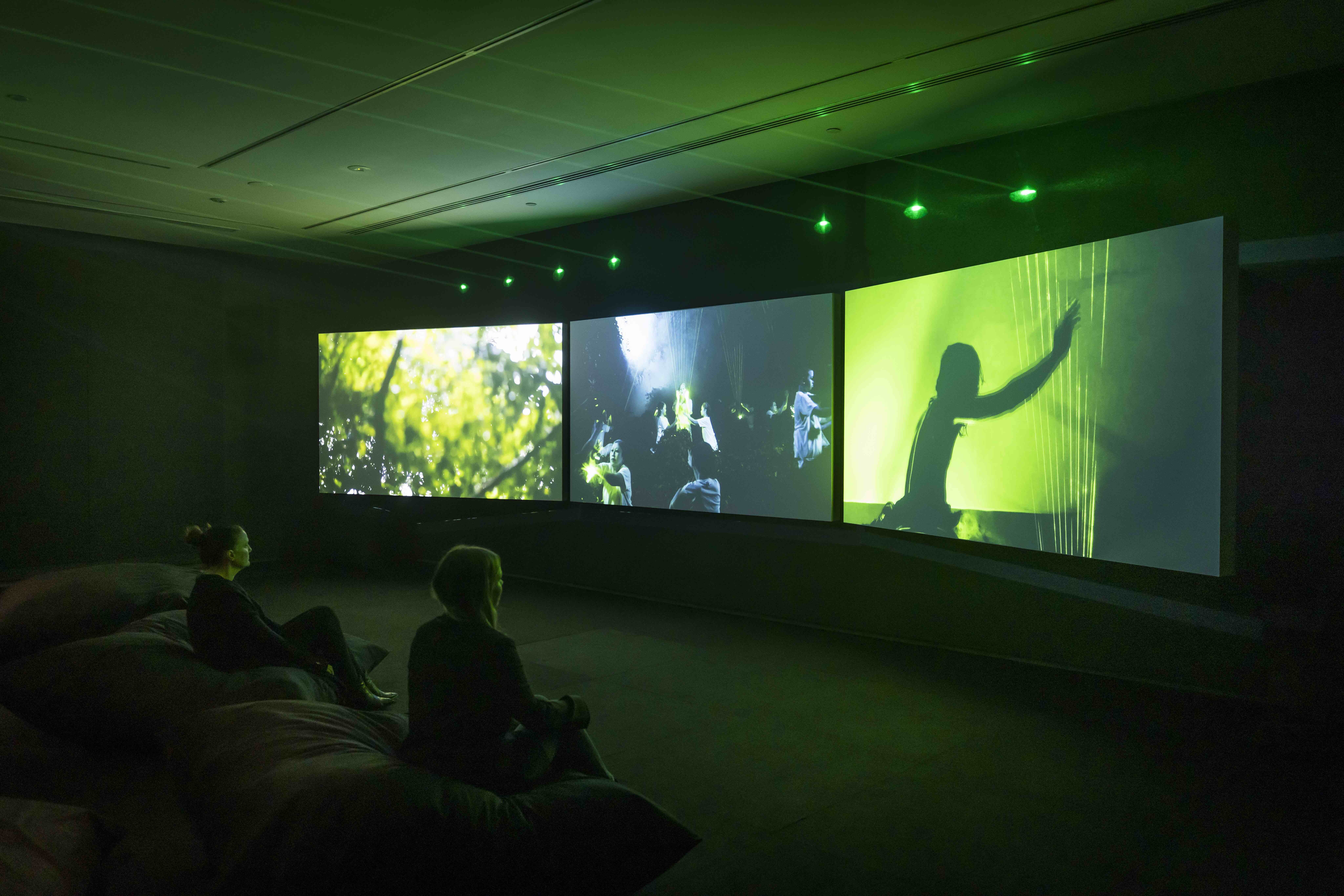
This issue of erasure was most clearly seen in the curation of Korakrit Arunanondchai and Alex Gvojic and Club Ate, whose works rely on specific references to Thai mythology and Filipino mythology respectively. Their works in the exhibition seem not only incongruous, but require a curatorial positioning beyond Davis’ flimsy application of chaohuan. Painting with history in a room filled with people with funny names (2018) by Korakrit Arunanondchai and Alex Gvojic turns to animist mythologies and storytelling as a means for communal reality-making. In this three-channel video installation, Arunanondchai and Gvojic depict the specific Thai mythology of the mythical river-dwelling serpent, the naga. In their video, the naga represents a resistance to Thai state power, which is embodied by queer performer Tosh Basco. The naga as a spiritual and intangible being complicates Western notions of the future that continue to be grounded in empirical rationalism. Often Western visions of the future hold little space for ancestral traditions, looking teleologically to material innovation and technological advancement. As the film states, “words make worlds, but worlds fall apart”. Exhibitions like Ultra Unreal may represent such worlds, but risk being subsumed into Western versions of speculative art and exhibition making.
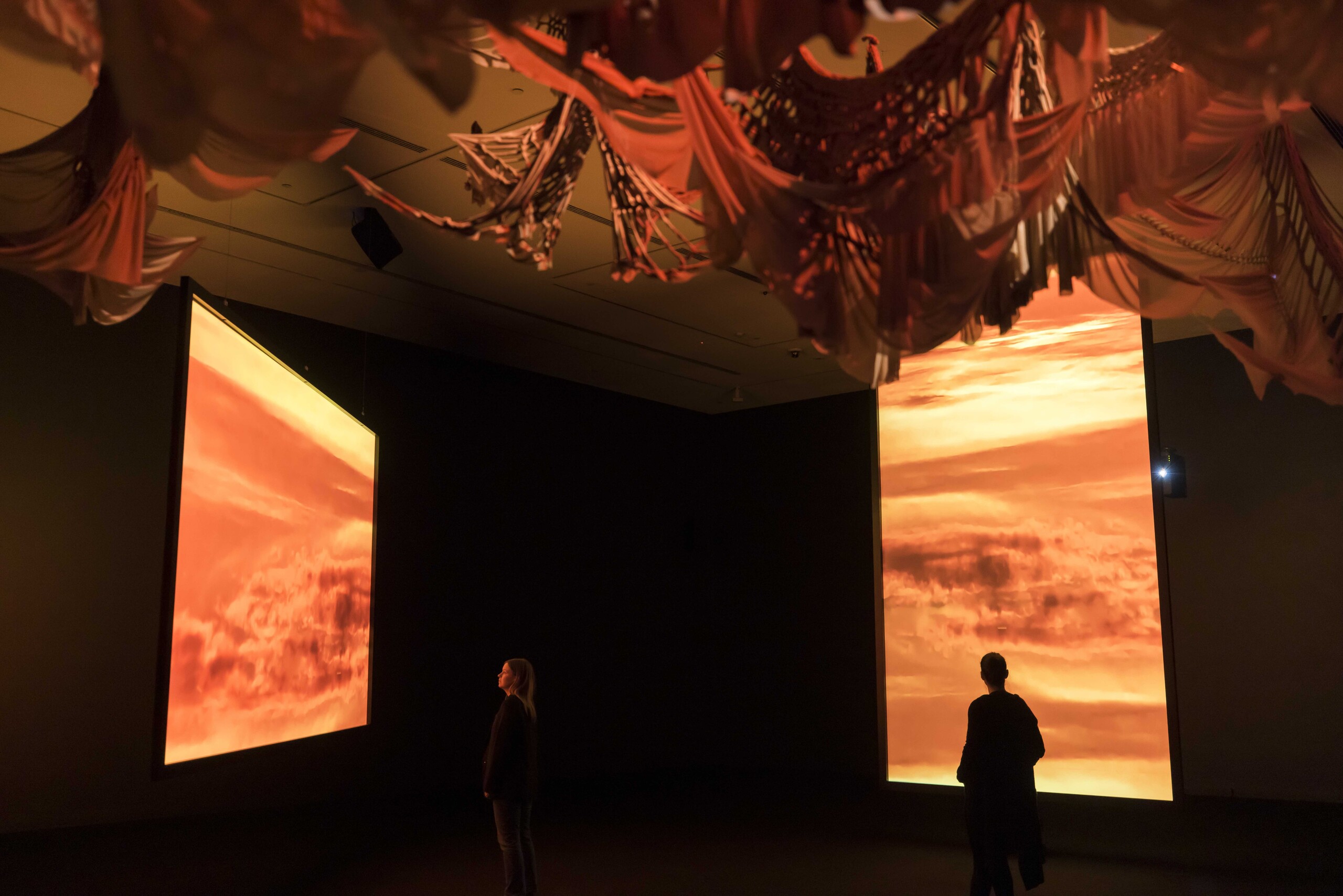
Exceeding that framework by turning to collectivist world-making, ANG IDOL KO / YOU ARE MY IDOL (2022) by Club Ate (Bhenji Ra and Justin Shoulder)—newly commissioned by the MCA specifically for the Ultra Unreal exhibition—is dedicated to precolonial ancestral figures such as the Buwaya (crocodile) and the Babaylan (queer and trans shamans), who are intermediaries between material and spiritual worlds vilified and were fed to the Buwaya during Spanish colonial times. In one segment of the film, we watch an aqueous realm on fire as billowing black smoke wafts into the horizon. On one screen we see Ra floating with eyes closed on the surface of the water, while on the other screen, the Buwaya begins to weave toward her, making its way across the screen to eventually glide underneath Ra, transporting her to the horizon. In another segment, we watch Ra and Shoulder, along with seven close friends, join one another at a banana leaf-lined table where the rice for their kamayan-style feast is moulded into the shape of a Buwaya. Together they embody the Babaylan and share stories of their connections to Buwaya in an improvisational manner, re-mythologising Buwaya as kin, lover and ancestor who carried the Babaylan home. The possibilities of speculative world-making resound as the scene climaxes to a communal “buwaya, buwaya, buwaya” chant, leaving us with a tangible sense of possibility and a way forward in the face of an uncertain future.

The works in Ultra Unreal are rich in narrative, histories and traditions. Without engaging with the entire length of the videos for a sustained amount of time, the show risks undermining the speculative politics of its individual artworks by spectacularising them, and by subsuming them under an abstract “Asian-ness” that feels a lot like techno-orientalism. Works like Geomancer run for as long as 48 minutes, demanding sustained attention from visitors, and thereby running the risk of visitors disengaging and overlooking the complexity of the displayed works. The effect of flattening, objectifying and aestheticising has real repercussions as these images become consumable. These “other worlds” that the MCA has curated seem ostensibly Asian, or at least contain Asian signifiers, use Asian languages and Asian bodies. Are we to see this focus on Asian artists as empowering Asia-futurism or rather does it risk a return to tired tropes of techno-orientalism?
June Miskell is an arts writer and editor based on Gadigal and Wangal land. She teaches at UNSW Art & Design. Soo-Min Shim is an arts writer living on Gadigal land and is a PhD student at the Australian National University.


